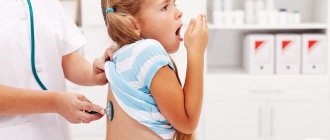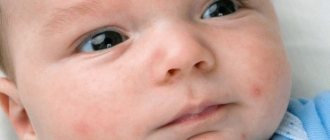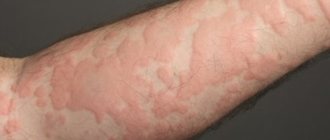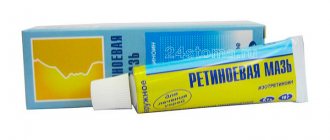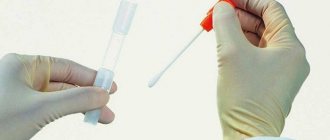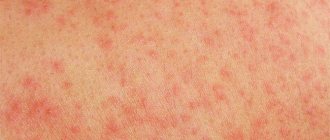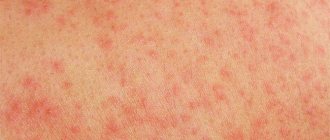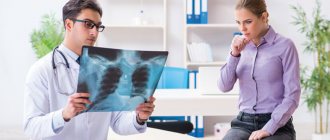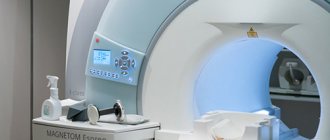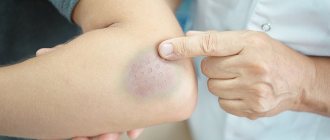From this article you will learn:
- causes of rosacea on the face,
- what role does the solarium play here?
- symptoms, effective medications,
- reviews of rosacea treatment with laser and IPL.
Rosacea is a chronic skin disease that manifests itself in the form of erythema (redness) of the skin, telangiectasia, as well as papules and pustules resembling regular acne. Due to the latter, this disease is also called “acne rosacea”. Rosacea occurs mainly in the middle third of the face, as well as in the forehead, nose and chin. In rare cases, it can occur outside the face - mainly on the neck, chest, scalp or ears.
Typical locations of Rosacea are:
A predisposing factor to the appearance of rosacea is considered, for example, to be exposure to solar UV radiation, which stimulates the production of vascular endothelial growth factor and leads to the appearance of networks of small capillaries, i.e. telangiectasia. Accordingly, rosacea can easily appear after tanning. Another factor is genetic predisposition (associated with the lability of the walls of blood vessels), as well as a person’s individual tendency to redness of the skin, which is also associated with the superficial location of the vessels.
In addition to these factors, the influence may be exerted by: 1) parasitic skin disease caused by Demodex folliculorum mites, as well as the bacteria Staphylococcus epidermidis, 2) gastrointestinal diseases associated with infection of the intestines by the bacterium Helicobacter pylori. Studies have found that in the presence of intestinal inflammation and Helicobacter pylori, hypersensitization of sensory neurons in the facial area occurs (through the synthesis of bradykinin, which is a powerful vascular dilator).
Most often, the disease is detected in patients 30-50 years old, and according to statistics it occurs in 10% of the population. It has been noted that rosacea occurs more often in people with fair skin who blush easily. Most often these are women with fair skin, blond hair and blue eyes. In men, the disease develops less frequently, but phymatous changes develop more often. Depending on the clinical manifestations, rosacea is usually divided into 4 types, which we will discuss below.
Rosacea on the face: photos, symptoms
Symptoms of rosacea usually begin with erythema, a persistent, temporary redness on the cheeks, nose, forehead or chin. Or another option - redness can be observed in the form of frequent, rapidly passing outbreaks of facial redness, which are usually called the term “hyperemia”. In both cases, the resulting redness may be accompanied by a feeling of warmth or burning. Over time, periods of skin redness become longer and more intense.
Rosacea on the face: photos, symptoms
In parallel with this, visible small blood vessels appear on the skin of the face, which are commonly called telangiectasia or spider veins. In the absence of treatment, inflammatory elements begin to appear - papules or pustules (they look like ordinary purulent pimples). In severe cases, the skin may gradually begin to thicken, in which case it also becomes loose. This can lead to facial disfigurement. If this process occurs on the nose, then it is called “rhinophyma”.
Rosacea affects the eyes in about 50% of patients, causing them to appear irritated, puffy, or bloodshot. If not treated promptly, such inflammation can lead to damage to the cornea and loss of visual acuity. All of the above symptoms are the main ones.
Secondary signs – researchers also identify secondary signs of rosacea, which, however, do not appear in isolation, but in combination with one or more main signs. This may be a feeling of burning or itching of the skin on the face. Or it may be red spots (in the form of plaques) that rise slightly above the surface of the skin. Or the skin in the middle third of the face may look dry, rough, and flaky.
Next, we move on to treatment regimens for various forms of rosacea. And here it must be remembered that when rosacea occurs on the face, the causes and treatment will always be closely interrelated, and therefore it is especially important at the first stage to identify the causative factor, as well as triggers leading to an exacerbation of the disease.
Diagnostics
The diagnosis, as recommended in medical textbooks and articles, is made based on the results of a physical examination of the visible manifestations of the disease and clarification of the medical history. The patient is asked in detail about the time of onset of primary symptoms. The doctor may ask about factors that, in the patient's opinion, reduce or increase symptoms. An additional research method, biopsy, is rarely used. This is the removal of a small piece of skin with a swab or scraping to identify parasites. In rare cases, monthly blood chemistry tests are performed for total bilirubin, serum alanine aminotransferase, aspartate aminotransferase, triglycerides, total cholesterol, glucose, serum creatinine, or alkaline phosphatase. Sometimes testing is done for antinuclear antibodies, which appear in the bloodstream as indicators of destruction of connective tissue cells. According to indications, seek advice from one of the specialists: an ophthalmologist, gastroenterologist, endocrinologist or psychotherapist.
An ophthalmologist is necessary if there is a risk of developing ocular rosacea. This specialist can prescribe supportive measures to alleviate the patient’s suffering: relieve the feeling of pain and dryness in the eyes, reduce sensitivity to bright light.
The gastroenterologist will prescribe additional diagnostic procedures to assess the condition of the digestive system. He can develop recommendations for proper nutrition or therapeutic fasting. It has been confirmed that smoked foods, saltiness, spices, citrus fruits, coffee-containing drinks, as well as alcohol increase the redness of the facial skin and provoke the appearance of new rashes.
An endocrinologist uses an examination to identify hormonal imbalances. Pathologies of the endocrine system often cause hot flashes. If unpleasant skin rashes appear, pre-prescribed hormonal therapy requires adjustment.
The psychotherapist will conduct a conversation to determine the general psycho-emotional state. He will advise what psychological techniques, relaxation techniques or sedatives can be used to get rid of depression. Patients suffering from rosacea, especially the severe form, often become more shy and withdrawn. Women usually hide imperfections with camouflage cosmetics, hide them behind long hair, and do not like to be seen. Females aged 30 to 40 years are at risk.
Erythematous-telangiectatic form -
Clinical features - this type is characterized by either the appearance of persistent erythema (i.e. redness) in the middle third of the face, or frequent but quickly passing attacks of hyperemia. Hyperemia differs from erythema primarily in its duration - it tends to pass quickly, while the severity of redness during hyperemia can be from moderate to very intense. In addition, patients often complain of small blood vessels visible through the skin (telangiectasia), as well as swelling of the face, roughness of the skin or peeling, and a feeling of tightness.
Telangiectasia with rosacea: photo
In this form, most patients associate a sharp deterioration in their condition with exposure to irritating factors - drinking hot drinks, spicy food, exposure to the sun, heat, etc. As a rule, these patients have sensitive skin and therefore, in response to the application of various products to the surface of the skin, they develop There is often a burning and tingling sensation in the skin. Many patients with this type of rosacea do not believe that they are sick with anything and do not seek qualified help (24stoma.ru).
Treatment regimens for erythematotelangiectatic form –
| Expressiveness | Treatment |
| Mild course - characterized by weak persistent erythema or not too frequent mild short-term outbreaks of hyperemia. There are rare telangiectasias. |
|
| Moderate course - moderate persistent erythema or frequent unpleasant outbreaks of hyperemia are observed. There are several well-defined telangiectasias. | In addition to the above:
|
| Severe course - pronounced persistent erythema or frequent severe hyperemia is observed. There may be tissue swelling in the area of redness. There are many well-defined telangiectasias. Patients may complain of burning, tingling, skin peeling, or plaque formation. | In addition to the above:
|
* The effectiveness of drugs with brimonidine was confirmed in clinical studies “Fowler J, Jackson M, Moore A, published in the journal Drugs Dermatol 2013; 12: 650-656."
Rosacea on the face: treatment of the erythematotelangiectatic form (before and after photos)
Avoid Potential Pathogens
These include spicy food, alcohol, very high and very low temperatures, stress, and some skincare products.
How can you determine which pathogen is causing your exacerbation? In this case, experts advise keeping a journal in which it is worth noting the change in condition, as well as what influenced it. Unfortunately, not all triggers can be avoided. Washing with cool water and using special anti-rosacea cleansers can relieve the flare-up. It is better not to use a scrub, as it can worsen the situation.
Papulopustular form -
The papulopustular form of rosacea manifests itself as persistent erythema in the middle third of the face, against which there are single or multiple papules or pustules (they look like pimples). Some patients may have plaques that rise above the surface of the skin. When treating this form at the first stage, the most important thing is to remove the inflammatory component, and only after that proceed to the correction of erythema or telangiectasia.
Treatment regimens for papulopustular form –
| Expressiveness | Treatment |
| Mild course - there are several papules or pustules without plaques; moderate persistent erythema is observed. |
|
| Moderate course - from several to numerous papules or pustules (but without plaques); moderate persistent erythema is observed. | |
| Severe – numerous papules or pustules with or without plaques; there is severe persistent erythema; Possible burning and tingling. | In addition to the above:
|
* The effectiveness of drugs with Ivermectin was confirmed in clinical studies “Stein Gold L, Kircik L, Fowler J, published in the journal Drugs Dermatol 2014; 13: 316-323."
Rosacea: treatment of papulopustular form (before and after photos)
Phymatous form (rhinophyma) –
Phymatous changes are called thickening of the skin (mainly in the nose area) - with the appearance of roughness, irregularities, and nodules on it. The thickening can be pronounced and then it leads to partial disfigurement of the face. Occurs more often in men, because they are less likely to seek medical help in the early stages of the disease. Thickening of the skin of the nose is called rhinophyma. Rarely, the phymatous form can be observed on the chin, forehead, cheeks, ears and eyelids.
Also, with this form, telangiectasia and hyperplasia of the sebaceous glands can occur. In the dermal layer of the skin, a dense inflammatory infiltrate is observed, in place of which then, for example, tissue proliferation and fibrosis occurs with the formation of nodes. There are several histological types of rhinophyma, for example, fibrous, glandular, fibroangiomatous, etc.
Treatment regimens for the phymatous form –
| Expressiveness | Treatment |
| Mild course - an increase in skin thickness, but without changes in contours |
|
| Moderate flow - there is a change in contours, but without a nodal component | In addition to the above:
|
| Severe flow - there is a change in contours with a nodal component |
Rhinophyma: removal of excess tissue with a CO2 laser
Ophthalmic rosacea –
In this form of rosacea, patients' eyes have a puffy or bloodshot appearance. Patients complain of a sensation of a foreign body in the eye, burning, tingling, dryness, itching, photosensitivity, blurred vision, telangiectasia of the eyelid margins, erythema around the eyes, blepharitis, recurrent conjunctivitis, iritis... With this form, a decrease in visual acuity may also occur, for example, due to corneal keratitis.
With ophthalmic rosacea, many patients mistakenly treat their eyes on their own, mistaking the onset of the disease for symptoms of an allergic reaction. As a result, patients most often end up seeing an ophthalmologist with moderate to severe forms of the disease.
Treatment regimens for ophthalmic rosacea –
| Expressiveness | Treatment |
| Mild course - redness of the conjunctiva of the eyelids and dysfunction of the meibomian glands. |
|
| Moderate course - redness of the conjunctiva of the eyelids, telangiectasia of the edges of the eyelids or conjunctiva of the eyeball, erythema around the eyes, impaired secretion of tear fluid, initial forms of corneal damage. | In addition to the above:
|
| Severe course - severe inflammation of the conjunctiva of the eyelids and eyeball, resistant to treatment; episcleritis, iritis or keratitis in addition to corneal damage and visual impairment. | In addition to the above:
|
Hydration
People with rosacea should have a moisturizer in their skincare arsenal.
Dermatologists advise using it daily, as moisturizing helps create a blocking barrier that prevents symptoms and irritation from appearing. However, you should take the choice of cream seriously, as the wrong product can worsen the situation. When choosing, you need to pay attention to the composition: it should not contain oils and fragrances, and on the packaging you should look for the “hypoallergenic” label. According to experts, the fewer items there are, the better.
Factors that trigger rosacea outbreaks –
The following list of triggers that can lead to rosacea flare-ups was compiled based on clinical research and published by the National Rosacea Society (USA).
| Factors that can cause rosacea flare-ups | ||
| Products - liver, yogurt, sour cream, cheese (except cottage cheese), chocolate, vanilla, soy sauce, yeast (bread is fine), vinegar, eggplant, avocado, spinach, beans and peas, citrus fruits, tomatoes, bananas, red plums, raisins or figs, spicy and too hot foods. Emotional states – stress, anxiety. | Medicines – some analgesics, vasodilators, steroids. Skin care products – cosmetics and hair sprays containing alcohol, witch hazel, fragrance, menthol, peppermint, eucalyptus oil, or any substance that causes redness or burning. Beverages - any alcohol (especially red wine), hot drinks, hot chocolate, coffee or tea. | Weather – exposure to the sun, strong wind, cold, high humidity. Temperature – sauna, hot baths, simple overheating, excessively warm environment. Medical conditions – menopause, cough, caffeine withdrawal syndrome. Exercise stress - active sports, work with a load, work in an incline. |
Importance of various factors –
Below we will divide these factors by strength (from the strongest to the weakest). Next to each factor, you will see the percentage of people for whom this factor was significant and almost certainly led to the development of a rosacea outbreak. This list is based on a survey of more than a thousand patients, and is also published by the National Rosacea Society.
In what percentage of cases do factors lead to exacerbations -
- sun exposure – 81%,
- emotional stress – 79%,
- hot weather – 75%,
- wind – 57%,
- heavy exercise – 56%,
- alcohol consumption – 52%,
- hot baths – 51%,
- cold weather – 46%,
- spicy food – 45%,
- humidity – 44%,
- high body temperature – 41%,
- some skin care products – 41%,
- hot drinks – 36%,
- certain cosmetics – 27%,
- medicines – 15%,
- medical conditions (see above) – 15%,
- some fruits – 13%,
- marinated meat – 10%,
- some vegetables – 9%,
- dairy products – 8%,
- other factors – 24%.
Skin care and cosmetics –
Gentle skin care and effective use of cosmetics can improve the appearance of your skin, but you should use products that are suitable for sensitive skin. Avoid any products that cause burning, redness or irritation. It is worth abandoning chemical and mechanical peeling products. In addition to irritants, components that provoke outbreaks of rosacea include:
- alcohol,
- witch hazel,
- flavorings,
- menthol,
- peppermint,
- Eucalyptus oil.
Try to use products that do not contain fragrances or strong preservatives. Always read the ingredient list carefully. Do not use many different products at once. Before using the product on your face, test it on your neck. In addition, please note that patients with rosacea, especially in winter (as well as in dry air indoors or outdoors), need to regularly use skin moisturizing creams. This will reduce skin irritation and reduce the risk of flare-ups.
Men's shaving and aftershave products – Shaving can be a big challenge for men with rosacea, so one option is to use an electric razor. You should also avoid using any shaving or aftershave lotions or products that contain alcohol, menthol or other irritants. Use gentle aftershave balms to soothe and hydrate your skin.
Sun protection –
Exposure to active solar radiation is the main factor causing flare-ups of rosacea and the appearance of telangiectasia. There are 2 types of damaging sun rays – UVA radiation and UVB radiation. Solar radiation consists of approximately 96.5% radiation of the first type, and 3.5% of the second type. UVA rays penetrate deeper into the skin, they lead to skin aging, the development of melanomas and affect the skin throughout the day.
Despite the fact that UVB rays are small (only 3.5%) they contribute to the development of skin cancer. Patients with rosacea need to choose sun protection products that protect against two types of radiation at once, with an SPF of 15 or higher. Sunscreens with mineral rather than chemical components will have minimal irritating effects on the skin. These components include zinc oxide and titanium dioxide. Apply these products every day when you go outside.
If you plan to stay in intense sun, apply the cream every 2 hours, and also every time immediately after swimming or heavy sweating. But even following these recommendations, you should limit your exposure to the sun in the summer, and try not to stay in the sun for long periods between 10 a.m. and 4 p.m. Our article: Facial Rosacea Causes and Treatment is based on clinical studies published by the National Rosacea Society (USA), and we hope you found it useful!
Sources:
1. Textbook of dermatology “Fitzpatrick's Dermatology” (8th edition), 2. American Academy of Dermatology (USA), 3. National Rosacea Society (National Rosacea Society, USA), 4. “Comparative assessment of the effectiveness of various methods of treating rosacea” (Pearl).
Prevention
Along with treatment, preventative measures are also important. To prevent the development of rosacea, you need to avoid exposure to:
- sun and wind;
- unhealthy diet;
- harmful drinks;
- medicines;
- aggressive cosmetic procedures (peelings, surgical skin smoothing, rubbing, warming masks, etc.).
For prevention, specialists regularly prescribe short courses of antibiotics. It is recommended to constantly care for the skin with cosmetic products for gentle cleansing, moisturizing and protection from ultraviolet radiation (for sensitive skin). It is necessary to remember about the treatment of concomitant pathologies, especially diseases of the digestive tract. Getting rid of the consequences does not diminish the cause of the illness.
